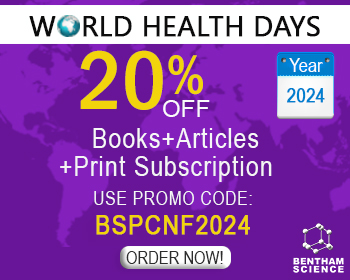Abstract
Homeostasis in the cardiovascular system is maintained by physiological functions of the Renin Angiotensin Aldosterone System (RAAS). In pathophysiological conditions, over activation of RAAS leads to an increase in the concentration of Angiotensin II (AngII) and over activation of Angiotensin Type 1 Receptor (AT1R), resulting in vasoconstriction, sodium retention and change in myocyte growth. It causes cardiac remodeling in the heart which results in left ventricular hypertrophy, dilation and dysfunction, eventually leading to Heart Failure (HF). Inhibition of RAAS using angiotensin converting enzyme inhibitors (ACEi) or angiotensin receptor blockers (ARBs) has shown to significantly reduce morbidity and mortality due to HF. ACEi have been shown to have higher drug withdrawal rates due to discomfort when compared to ARBs; therefore, ARBs are the preferred choice of physicians for the treatment of HF in combination with other anti-hypertensive agents. Currently, eight ARBs have been approved by FDA and are clinically used. Even though they bind to the same site of AT1R displacing AngII binding but clinical outcomes are significantly different. In this review, we described the clinical significance of each ARB in the treatment of HF and their clinical outcome.
Keywords: AT1R, AngII, angiotensin receptor blockers, heart failure, cardiovascular diseases, hypertension, GPCRs.
[http://dx.doi.org/10.1002/clc.4960141802] [PMID: 1893644]
[http://dx.doi.org/10.5049/EBP.2008.6.1.42] [PMID: 24459521]
[http://dx.doi.org/10.1210/er.2003-0001] [PMID: 12788798]
[http://dx.doi.org/10.1016/S0014-5793(98)01145-4] [PMID: 9781693]
[http://dx.doi.org/10.1038/hr.2016.17] [PMID: 26888118]
[http://dx.doi.org/10.1124/pr.114.010454] [PMID: 26315714]
[http://dx.doi.org/10.1111/bph.13742] [PMID: 28194766]
[http://dx.doi.org/10.1152/physrev.00003.2005] [PMID: 16183910]
[http://dx.doi.org/10.1016/j.mcna.2009.02.014] [PMID: 19427492]
[http://dx.doi.org/10.1093/cvr/cvn230] [PMID: 18703536]
[http://dx.doi.org/10.1038/srep43107] [PMID: 28338001]
[http://dx.doi.org/10.1073/pnas.0602715103] [PMID: 17148616]
[http://dx.doi.org/10.1016/j.vph.2017.05.005] [PMID: 28579545]
[http://dx.doi.org/10.1080/10623320490482664] [PMID: 15370071]
[http://dx.doi.org/10.1161/01.RES.19.3.571] [PMID: 4288687]
[http://dx.doi.org/10.2165/00002018-199207010-00004] [PMID: 1536695]
[http://dx.doi.org/10.1161/01.HYP.11.3_Pt_2.II37] [PMID: 3280490]
[http://dx.doi.org/10.1016/j.cell.2015.04.011] [PMID: 25913193]
[http://dx.doi.org/10.1074/jbc.M115.689000] [PMID: 26420482]
[http://dx.doi.org/10.1021/acs.jcim.7b00424] [PMID: 29195045]
[http://dx.doi.org/10.1016/j.cell.2018.12.006]
[http://dx.doi.org/10.1021/acs.jcim.8b00583] [PMID: 30608150]
[PMID: 2213556]
[http://dx.doi.org/10.1016/j.tcm.2015.06.004] [PMID: 26169314]
[http://dx.doi.org/10.1016/S0140-6736(00)02213-3] [PMID: 10821361]
[http://dx.doi.org/10.1001/jama.2012.452] [PMID: 22496265]
[http://dx.doi.org/10.1161/01.CIR.91.3.691] [PMID: 7828295]
[http://dx.doi.org/10.1097/CRD.0b013e31822e9ba3] [PMID: 21983318]
[http://dx.doi.org/10.1161/HYPERTENSIONAHA.110.163402] [PMID: 21282560]
[http://dx.doi.org/10.1016/j.ijge.2015.06.003]
[http://dx.doi.org/10.1248/bpb.b13-00194] [PMID: 23727946]
[http://dx.doi.org/10.1097/HJH.0000000000000839] [PMID: 26766564]
[http://dx.doi.org/10.3389/fphar.2016.00235] [PMID: 27536242]
[http://dx.doi.org/10.1038/hr.2013.142] [PMID: 24108238]
[http://dx.doi.org/10.1161/01.CIR.0000146819.43235.A9] [PMID: 15492298]
[http://dx.doi.org/10.1016/S0140-6736(03)14285-7] [PMID: 13678871]
[http://dx.doi.org/10.1016/S0140-6736(03)14284-5] [PMID: 13678870]
[http://dx.doi.org/10.1136/ebm.9.2.44] [PMID: 15122853]
[http://dx.doi.org/10.2147/ciia.2006.1.4.357] [PMID: 18046913]
[http://dx.doi.org/10.15420/cfr.2018.11.2] [PMID: 30206479]
[http://dx.doi.org/10.1159/000139534] [PMID: 9399334]
[http://dx.doi.org/10.1161/01.HYP.32.4.746] [PMID: 9774374]
[http://dx.doi.org/10.1007/s11906-001-0068-9] [PMID: 11580885]
[http://dx.doi.org/10.1016/S0008-6363(01)00257-7] [PMID: 11376628]
[http://dx.doi.org/10.1097/00004872-200403000-00022] [PMID: 15076165]
[http://dx.doi.org/10.1038/sj.bjp.0705032] [PMID: 12540520]
[http://dx.doi.org/10.1056/NEJMoa0805450] [PMID: 19001508]
[http://dx.doi.org/10.1161/CIRCHEARTFAILURE.111.964221] [PMID: 22267751]
[http://dx.doi.org/10.1007/s40264-014-0239-7] [PMID: 25416320]
[http://dx.doi.org/10.1038/hr.2015.141] [PMID: 26657004]
[PMID: 30542460]
[http://dx.doi.org/10.1016/j.cca.2011.09.024] [PMID: 21983097]
[http://dx.doi.org/10.1253/circj.CJ-16-0577] [PMID: 27628221]
[http://dx.doi.org/10.1093/eurheartj/ehu504] [PMID: 25637937]
[http://dx.doi.org/10.1016/j.mce.2011.12.010] [PMID: 22200414]
[http://dx.doi.org/10.7150/ijbs.7.154] [PMID: 21383952]
[http://dx.doi.org/10.1016/j.atherosclerosis.2011.10.013] [PMID: 22119063]
[http://dx.doi.org/10.1161/HYPERTENSIONAHA.113.02855] [PMID: 24535009]
[http://dx.doi.org/10.1097/MJT.0000000000000733] [PMID: 29557807]
[http://dx.doi.org/10.1111/j.1365-2710.2011.01295.x] [PMID: 21848583]
[http://dx.doi.org/10.1586/ecp.10.141] [PMID: 22115399]
[http://dx.doi.org/10.1007/s11906-008-0064-4] [PMID: 18775108]
[http://dx.doi.org/10.1016/j.jacc.2010.03.105] [PMID: 21070920]
[http://dx.doi.org/10.1016/S0140-6736(08)61242-8] [PMID: 18757085]
[http://dx.doi.org/10.1097/HJH.0000000000000154] [PMID: 24621807]
[http://dx.doi.org/10.1038/hr.2010.67] [PMID: 20535115]
[http://dx.doi.org/10.1136/heartjnl-2012-302920v.10]
[http://dx.doi.org/10.3892/etm.2016.3933] [PMID: 28123481]
[http://dx.doi.org/10.1016/j.diabres.2012.01.037] [PMID: 22377232]
[http://dx.doi.org/10.1056/NEJMoa010713] [PMID: 11759645]
[http://dx.doi.org/10.1054/jcaf.2003.22] [PMID: 12815565]
[PMID: 20428262]
[http://dx.doi.org/10.1067/mhj.2000.108832] [PMID: 11054617]
[http://dx.doi.org/10.1056/NEJMoa032292] [PMID: 14610160]
[http://dx.doi.org/10.1177/2040622316665350] [PMID: 27803793]
[http://dx.doi.org/10.1016/j.repc.2018.10.011] [PMID: 31029493]
[http://dx.doi.org/10.1016/j.mayocp.2015.10.019] [PMID: 26763511]
[http://dx.doi.org/10.1097/HJH.0b013e3280bad9b4] [PMID: 17414657]



























